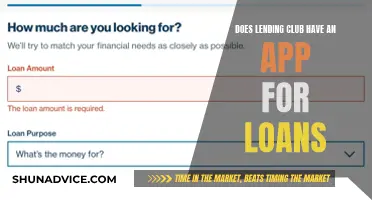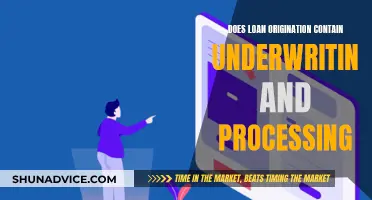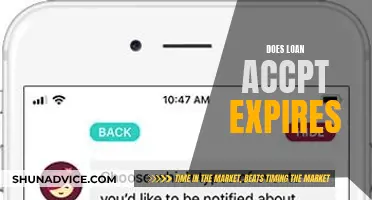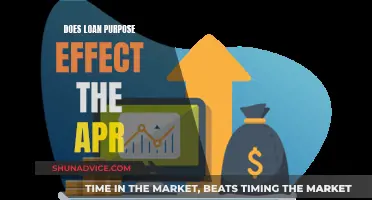
The impact of loan forbearance on loan forgiveness depends on the type of loan and the specific circumstances of the borrower. Generally, forbearance periods do not count towards loan forgiveness, including for Public Service Loan Forgiveness (PSLF) and Income-Driven Repayment (IDR) loan forgiveness. However, there have been temporary initiatives, such as the Limited PSLF Waiver and the IDR Account Adjustment, which allowed certain forbearance periods to be counted towards loan forgiveness. These initiatives were implemented by the Biden administration to provide relief to borrowers during the COVID-19 pandemic and have since expired. Going forward, new loan regulations will allow borrowers to buy back months spent in forbearance, enabling them to count towards loan forgiveness. It is important for borrowers to stay informed about their loan options and any changes in loan forgiveness programs to make the most of opportunities for debt relief.
What You'll Learn

Forbearance and loan forgiveness for PSLF
Forbearance is when a lender or creditor agrees that they will suspend or reduce a borrower's loan payments for a limited period. This is often done when the borrower faces financial hardship.
Forbearance periods will not count toward Public Service Loan Forgiveness (PSLF) or Income-Driven Repayment (IDR) loan forgiveness. This means that if you are in a period of forbearance, the months spent in this period will not count toward the required 120 payments for PSLF. The Education Department has confirmed this in its new guidance, stating that "the time in forbearance will not count toward Public Service Loan Forgiveness or Income-Driven Repayment (IDR) loan forgiveness."
This has caused frustration for many borrowers, as it could mean months of delay in getting their loans forgiven. Some borrowers have expressed that they would rather continue making payments during the forbearance period to avoid extending the loan repayment process.
It is important to note that the rules and guidelines regarding forbearance and loan forgiveness may change or be updated. Therefore, it is always a good idea to stay informed and seek official sources or guidance for the most up-to-date information.
Loan Entrance Counseling: What's the Verdict?
You may want to see also

IDR Account Adjustment
The IDR account adjustment is a one-time payment count adjustment program introduced by the Biden administration in 2022 to address past issues with the IDR and PSLF programs, including miscounting payments and needlessly putting borrowers into forbearance. This adjustment bent the rules on which payments count toward IDR forgiveness, so a greater number of months spent in student loan repayment or on pause since leaving school count toward forgiveness, even if the borrower had never enrolled in an IDR plan before. It also counted months spent in the three-year pandemic forbearance.
The IDR account adjustment gives credit toward forgiveness to federal student loan borrowers, including Direct Loan program borrowers, graduate and Parent PLUS Loan holders, and private-sector and public-sector workers. The adjustment applies to borrowers who qualify for PSLF, which erases remaining loan balances after 10 years of student loan payments if the borrower works for a qualifying nonprofit employer during that time. It also applies to borrowers who have spent 12 or more months in consecutive forbearance or 36 or more months in total forbearance.
Borrowers who have spent less than 12 months in a row in forbearance or less than 36 months altogether in forbearance can file a complaint with the FSA Ombudsman to request credit for shorter forbearances. Additionally, Parent PLUS borrowers seeking PSLF or IDR loan forgiveness can get credit toward IDR loan forgiveness under the account adjustment even if they haven't yet consolidated their loans. However, to continue earning credit toward IDR loan forgiveness, they will need to consolidate their Parent PLUS Loan into a new Direct Consolidation Loan and then sign up for an Income-Contingent Repayment (ICR) plan.
The IDR account adjustment is expected to be completed by January 2025, and as of January 16, 2025, 1.45 million student loan borrowers have received forgiveness through this adjustment. Borrowers can use the new IDR tracker on StudentAid.gov to check their updated progress toward IDR forgiveness, including the number of qualifying payments made, the number of payments left before forgiveness, and a projected forgiveness date.
Medical Expenses: Are Loans Counted as Income?
You may want to see also

COVID-19 payment pause
In response to the COVID-19 pandemic, a law was passed by Congress in March 2020 to suspend federal student loan payments. The COVID-19 payment pause lasted for about four and a half years, ending on September 1, 2023, with payments resuming in October 2023. During the payment suspension, the interest rate was lowered to 0% for all eligible loans, and no collection activities were to be carried out on defaulted loans.
The COVID-19 payment pause applied to all federal student loans held by the Department of Education. However, it did not include some federal loans such as commercially-held FFEL Loans or Perkins Loans. The months spent in the payment pause will count toward IDR and PSLF forgiveness, but borrowers must ensure they are otherwise eligible for these forgiveness programs.
The Education Department has stated that the time in forbearance will not count toward Public Service Loan Forgiveness or Income-Driven Repayment (IDR) loan forgiveness. This has caused frustration among borrowers, who are urging senators and representatives to codify the SAVE plan to ensure that these months count toward loan forgiveness.
The Department of Education's Fresh Start program prevents immediate collection on loans as payments resume. Borrowers can also consolidate their loans into a Direct Loan program to be eligible for the payment suspension and interest pause.
Lending Club's Real Estate Loan Options: What You Need to Know
You may want to see also

Consolidating loans
Debt consolidation is a good way to get on top of your payments and bills. It combines all of your debts into a single loan with a fixed interest rate and repayment term, which means you'll have just one monthly payment. This can lower the interest rates you're paying on each individual loan and help you pay off your debts faster.
Debt consolidation starts by looking at your financial picture using rate tools. Then, you can consider a loan or line of credit. You can use the money to pay off your debts more quickly. You'll pay the same amount every month, and it won't affect your credit score.
If you have multiple credit cards or loans with higher rates, you may save money and pay off debt faster by consolidating your debt. However, consolidating multiple debts may not reduce or pay off your debt sooner. The payment reduction may come from a lower interest rate, a longer loan term, or a combination of both. By extending the loan term, you may pay more in interest over the life of the loan.
To apply for a personal loan or line of credit, you can apply online, by phone, or in person. The length of time to process the application varies depending on your situation. Once you've signed the documents at closing, the funds will be available after a waiting period of three business days on accounts secured by a primary residence.
Lending Tree's Medical Loan Options: What You Need to Know
You may want to see also

Qualifying payments
The Biden administration has introduced several initiatives that allow certain periods of deferment and forbearance to count towards student loan forgiveness. These include the Limited PSLF Waiver and the IDR Account Adjustment. The PSLF Waiver ended on 30 June 2024, but the IDR Account Adjustment is still ongoing.
Under these initiatives, the Education Department can count the following towards a borrower’s student loan forgiveness term under PSLF and IDR:
- Any months spent in any deferment (except in-school deferment) before 2013.
- Months during the COVID-19 payment pause (March 2020–September 2023).
- Months that qualify under the IDR Adjustment.
- Months where loans are placed on administrative forbearance after the repayment restart.
The IDR Account Adjustment also allows borrowers to receive additional loan forgiveness credit for:
Any months spent in an economic hardship deferment or military service deferment after 2013.
The Department of Education suggests checking with your loan servicer or submitting a complaint directly if you believe there has been a mistake with your payment count.
Loan Depot: PMI Charges and How to Avoid Them
You may want to see also
Frequently asked questions
Generally, no. The Education Department has stated that the time in forbearance does not count toward Public Service Loan Forgiveness or Income-Driven Repayment (IDR) loan forgiveness. However, there have been temporary exceptions to this rule, such as the Limited PSLF Waiver and the IDR Account Adjustment, which allowed certain periods of forbearance to count toward loan forgiveness.
The PSLF Waiver was a temporary initiative by the Biden administration that allowed certain past periods of forbearance to count toward Public Service Loan Forgiveness (PSLF). The waiver ended on October 31, 2022.
The IDR Account Adjustment is another initiative by the Biden administration that allows certain periods of forbearance to count toward Income-Driven Repayment (IDR) loan forgiveness. This adjustment is still ongoing and extends many of the benefits of the PSLF Waiver.
You can check with your loan servicer or submit a complaint to the Federal Student Aid (FSA) Ombudsman if you believe a forbearance period should have counted toward loan forgiveness. It is important to continue certifying your employment and tracking your progress to identify periods of forbearance.
Yes, new loan regulations allow borrowers to buy back months spent in forbearance. This option allows forbearance to count toward loan forgiveness if you are willing to pay for it. You will pay what your income-driven repayment plan payment would have been if you were not in forbearance.







